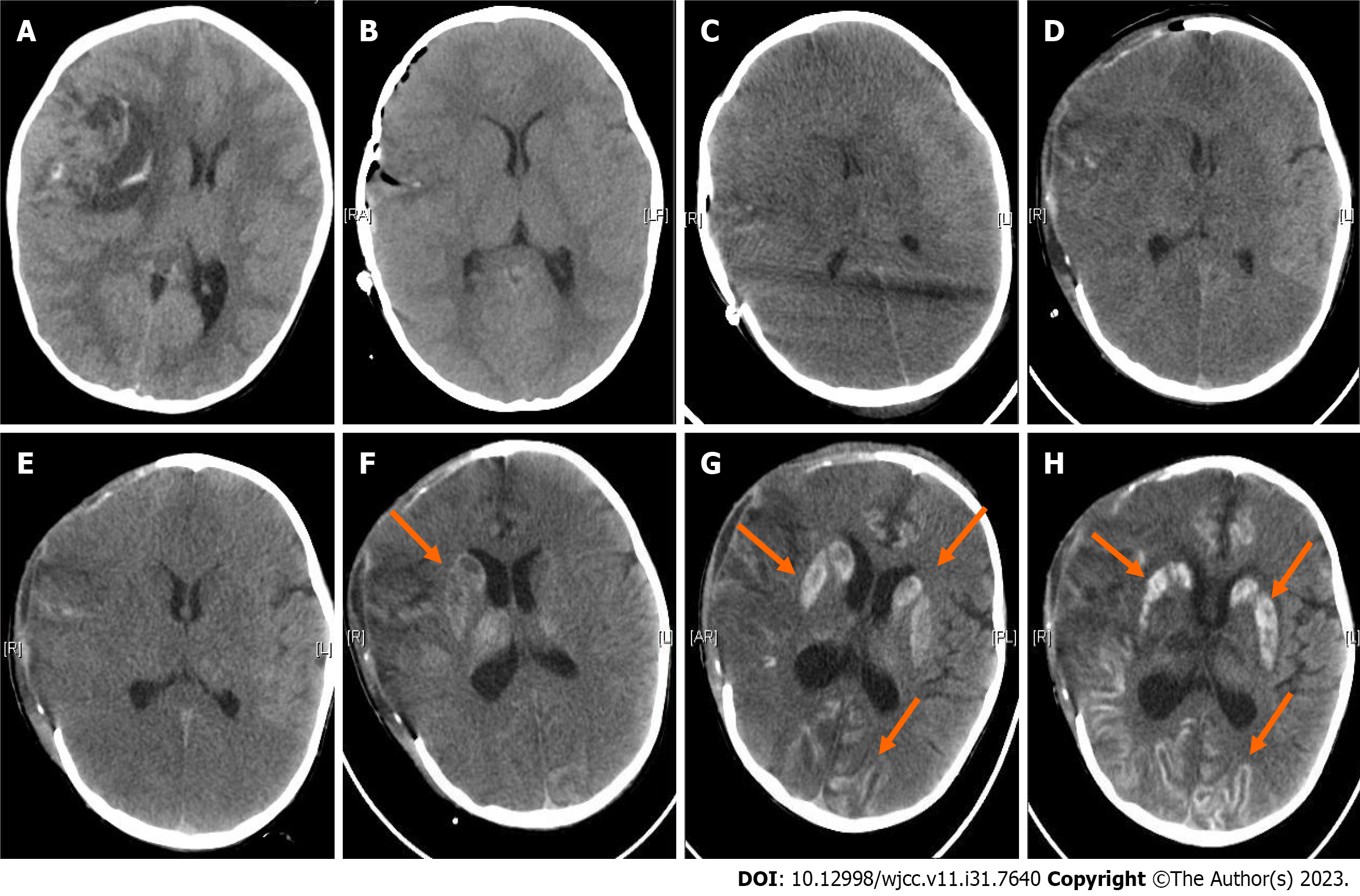Copyright
©The Author(s) 2023.
World J Clin Cases. Nov 6, 2023; 11(31): 7640-7646
Published online Nov 6, 2023. doi: 10.12998/wjcc.v11.i31.7640
Published online Nov 6, 2023. doi: 10.12998/wjcc.v11.i31.7640
Figure 1 Preoperative nonenhanced magnetic resonance imaging shows a large space-occupying lesion containing cystic and solid components in the right frontotemporal lobe.
A: T1 weighted image; B: T2 weighted image.
Figure 2 Preoperative and repeated postoperative computed tomography scans.
A: Preoperative computed tomography (CT) scan showed a large space-occupying lesion; B: CT scan 6 h after emergency tumor resection; C: On the 3rd postoperative day, noncontrast CT showed diffuse brain swelling and low perfusion; D: CT scan 6 h after decompressive craniectomy; E. Noncontrast CT scan on the 6th d after decompressive craniectomy; F: Noncontrast CT scan on the 9th d after decompressive craniectomy. The density of the cortical gyrus and right basal ganglia increased; G: Noncontrast CT scan on the 12th d after decompressive craniectomy. The density of both the cortical gyrus and the bilateral basal ganglia increased gradually; H: Noncontrast CT scan on the 15th d after decompressive craniectomy. The density of both the cortical gyrus and the bilateral basal ganglia increased significantly.
Figure 3 Ultrasound scan on the 15th d after decompressive craniectomy.
A: Ultrasound B-mode image obtained by a clinical ultrasound system (BK2300, BK Medical, Denmark); B: Ultrasound B-mode image obtained by a Verasonics Vantage 256 system (Verasonics Inc., Kirkland, WA, United States); C: Ultrafast power Doppler imaging overlaid on the B-mode image.
- Citation: Huang LJ, Jiao JF, He Q, Luo JW, Guo Y. Ultrafast power Doppler imaging for ischemic encephalopathy: A case report. World J Clin Cases 2023; 11(31): 7640-7646
- URL: https://www.wjgnet.com/2307-8960/full/v11/i31/7640.htm
- DOI: https://dx.doi.org/10.12998/wjcc.v11.i31.7640











